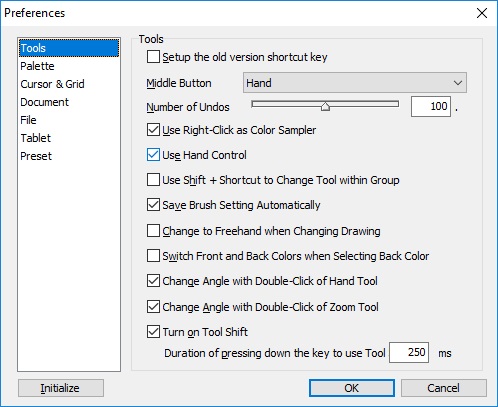
#Open canvas 6 kat skin#
In this example, I used 1 layer for hair, 1 layer for skin + eyes, 1 layer for the cloak and another for the clothes underneath. no shadow/highlight) Again, I personally like to use several layers for this. In this example, I colour in the character first (my bad )Īnyway, open up a new layer (Calculation = Standard), move this layer to BELOW your "ink" layer (or layers) Start filling in the "base" colour (by "base" colour I mean just one block of colour with no variation of tone in i.e. you can choose to colour in the background first or colour in your character first. (you can also delete the "sketch" layer when you have complete the inking process) You can always merge the layers (Layers > Merge Down) when you have finish inking.

Inking hair on a seperate layer from the facial features allows you to clean up the hair ink lines without erasing the ink lines for the facial features, vice versa. This is when the seperate layer comes in handy. As hair are always made up of long curves, it is likely that you would ended up with curve that's made up of lots of straight lines when you ink. Especially concerning hair and facial features. I do that because it's easier to do individual adjustments when needed to.

Out of habit, I like to use several layers when I ink - 1 layer for hair, 1 layer for the face + hands etc and 1 layer for clothes. I usually zoom in to 150% when I ink, because I found it easier to get clean lines that way
#Open canvas 6 kat how to#
As to how to ink clean and neatly, I'm afraid you just have to be patient and practise a lot. I always go with default setting, you can always make your line thicker by going over it several times). Start inking on the "Ink" layer (again, it's all up to personally preference as to what brush size you want to ink in. To make it easier to see your "ink" line, lower the opacity of your "sketch" layer first. So open up a new layer (Calucation = Standard) on top of your "sketch" layer. This is not recommended unless you have a tablet!!! (or you're extremely good at drawing with a mouse) It doesn't really matter what size brush you draw in, I usually work with the default setting.Īs I'm not very confident with my tablet drawing skills, I tend to "ink" my drawing on a seperate layer. So I tend to do my sketches directly in Open Canvas. Make a sketch!!! As my scanner is too old, my new computer doesn't support it. I'm just recording what I've done in order to create a piece.) to show you how I do Cel Shading in Open Canvas 3.03. *dies*Īnyway, this is a mini tutorial (actually, I'm not even sure this is a proper tutorial or not.

This is my first time writing a tutorial so bear with me I know I'm not the best teacher around but I tried.


 0 kommentar(er)
0 kommentar(er)
